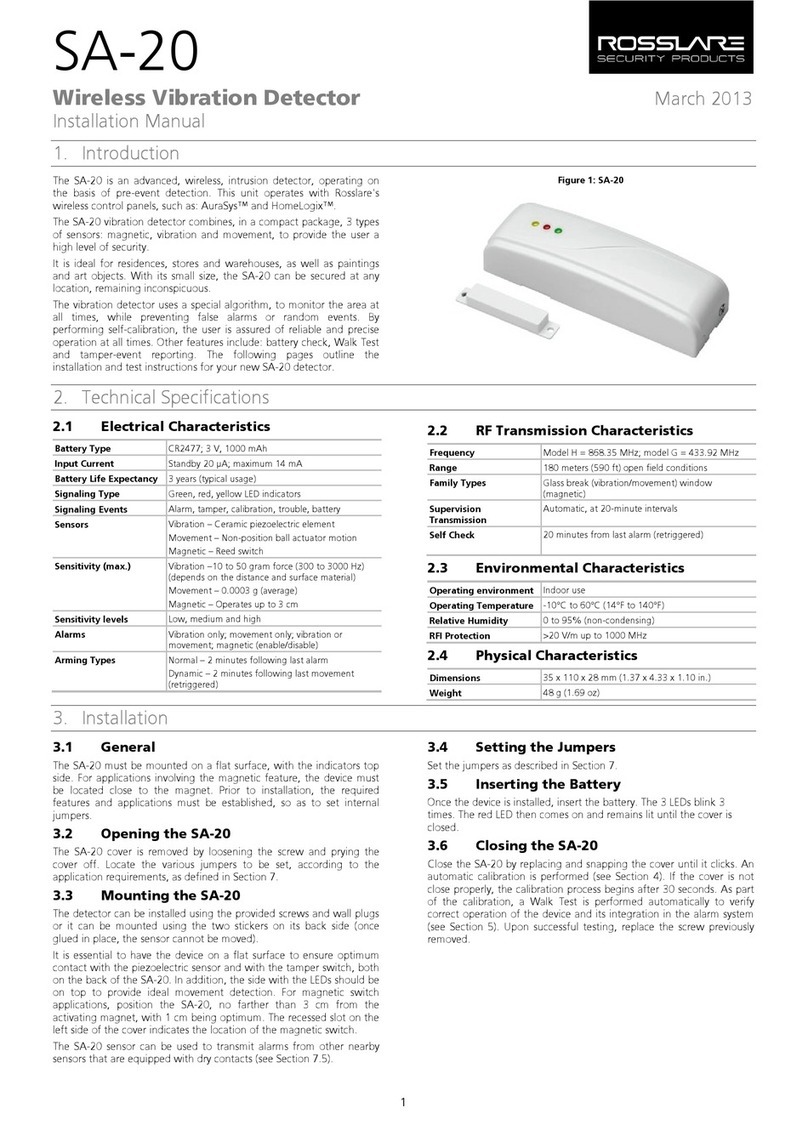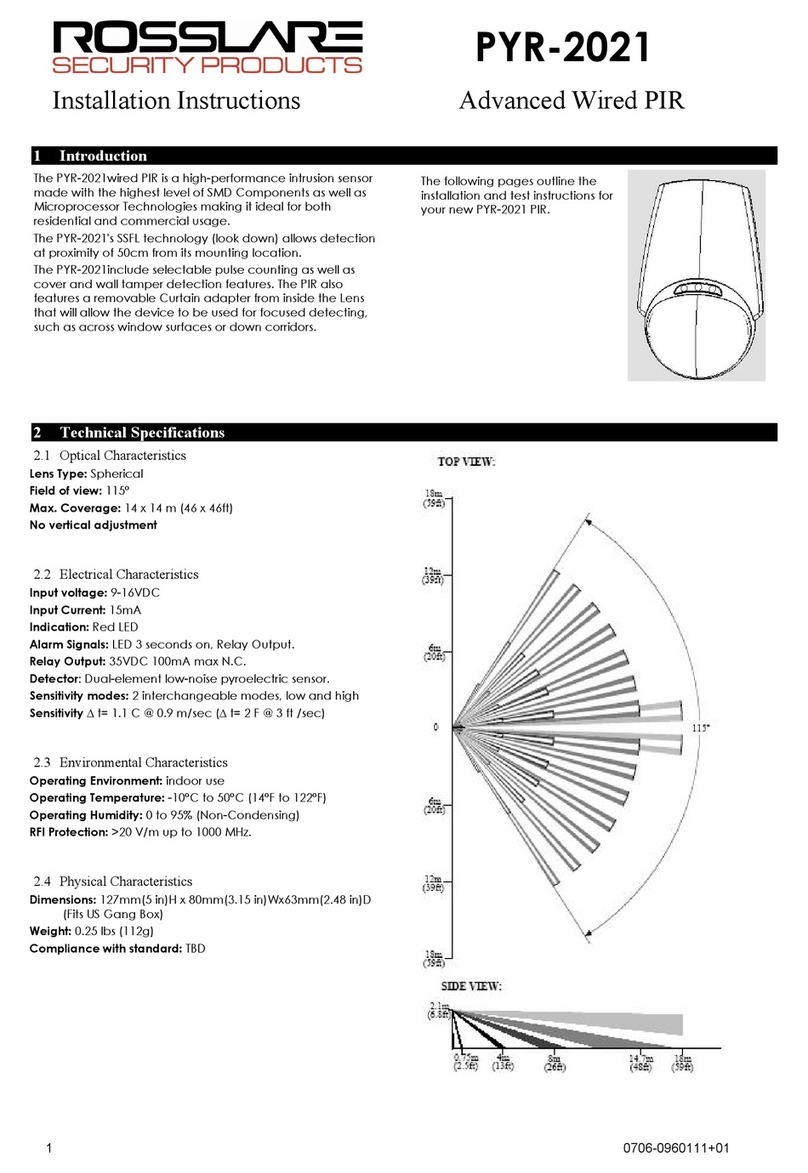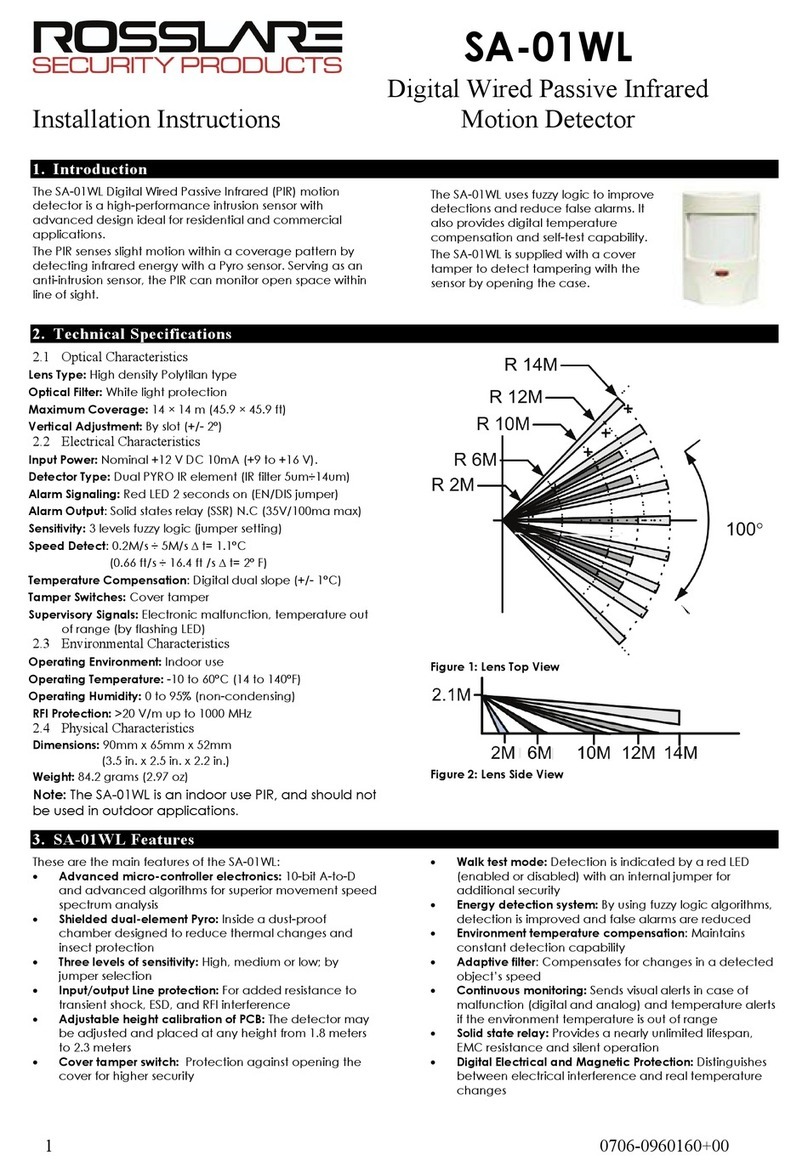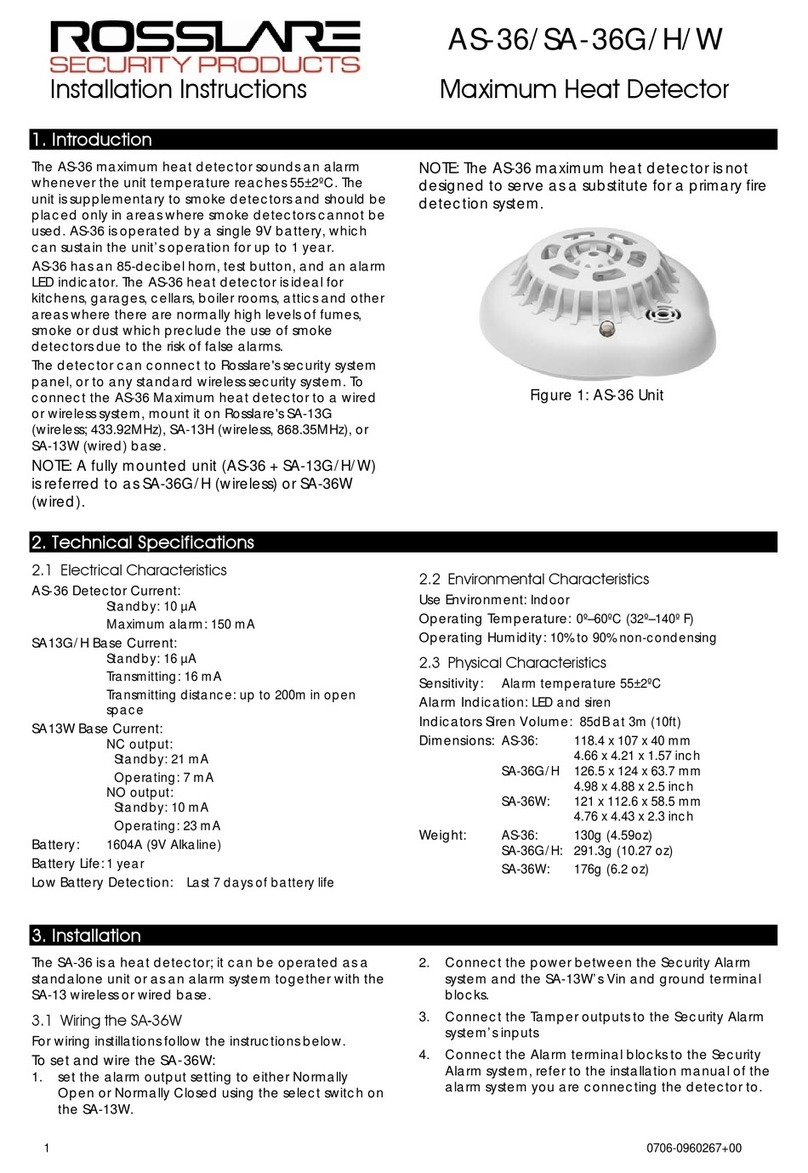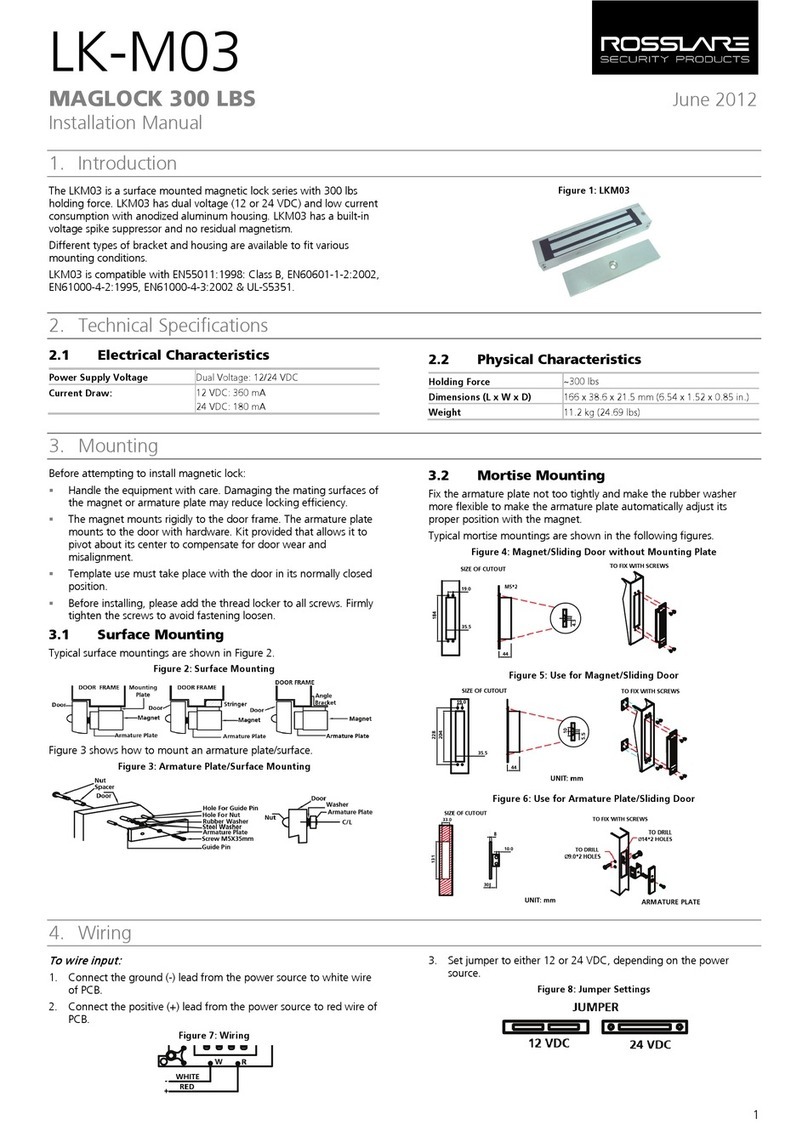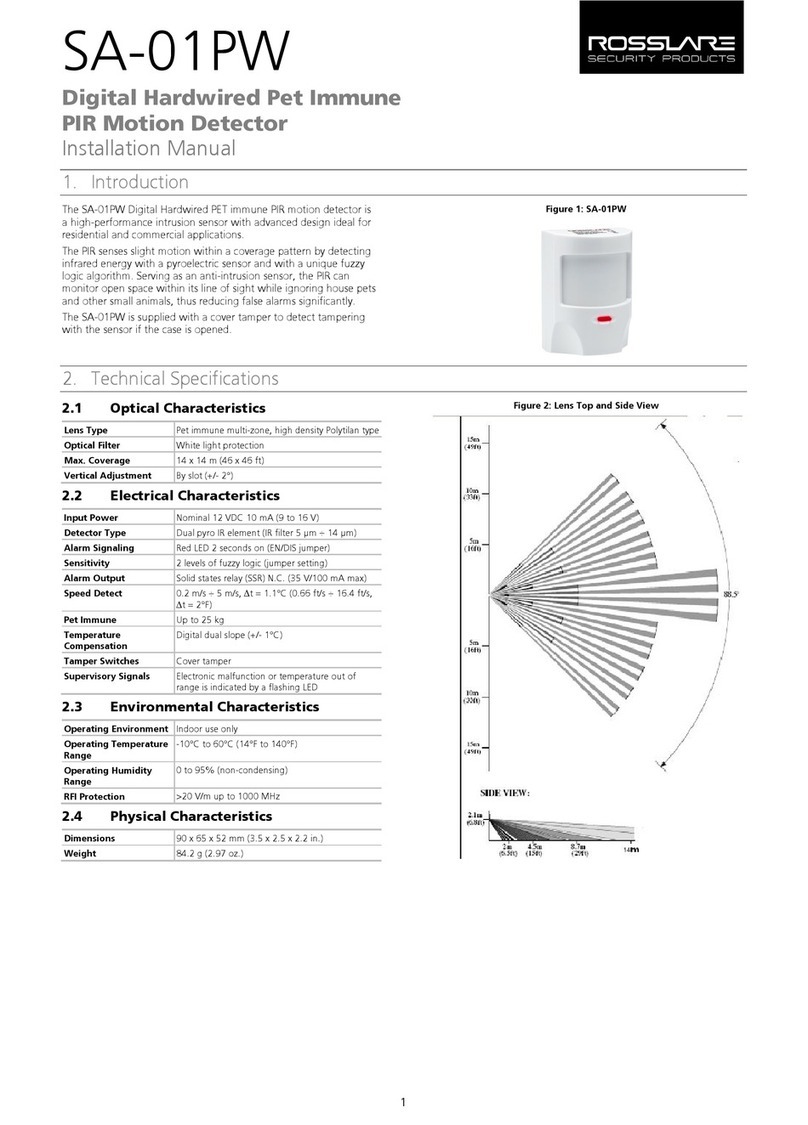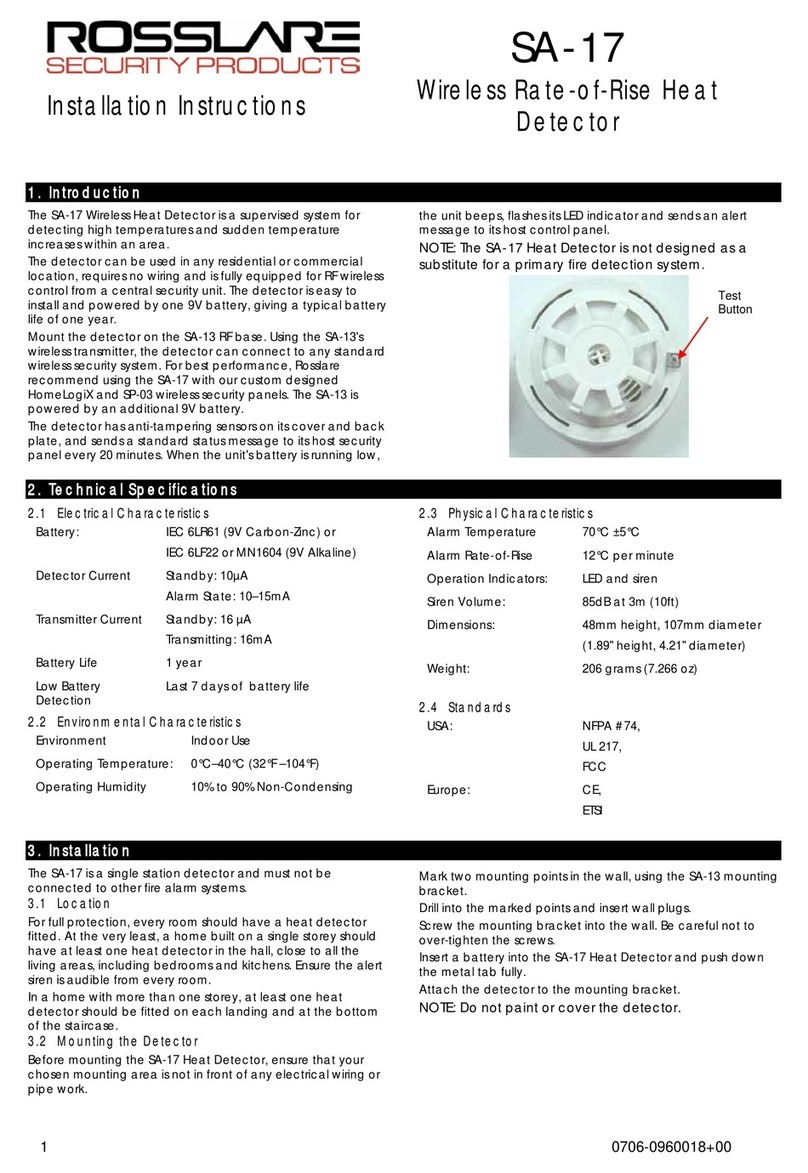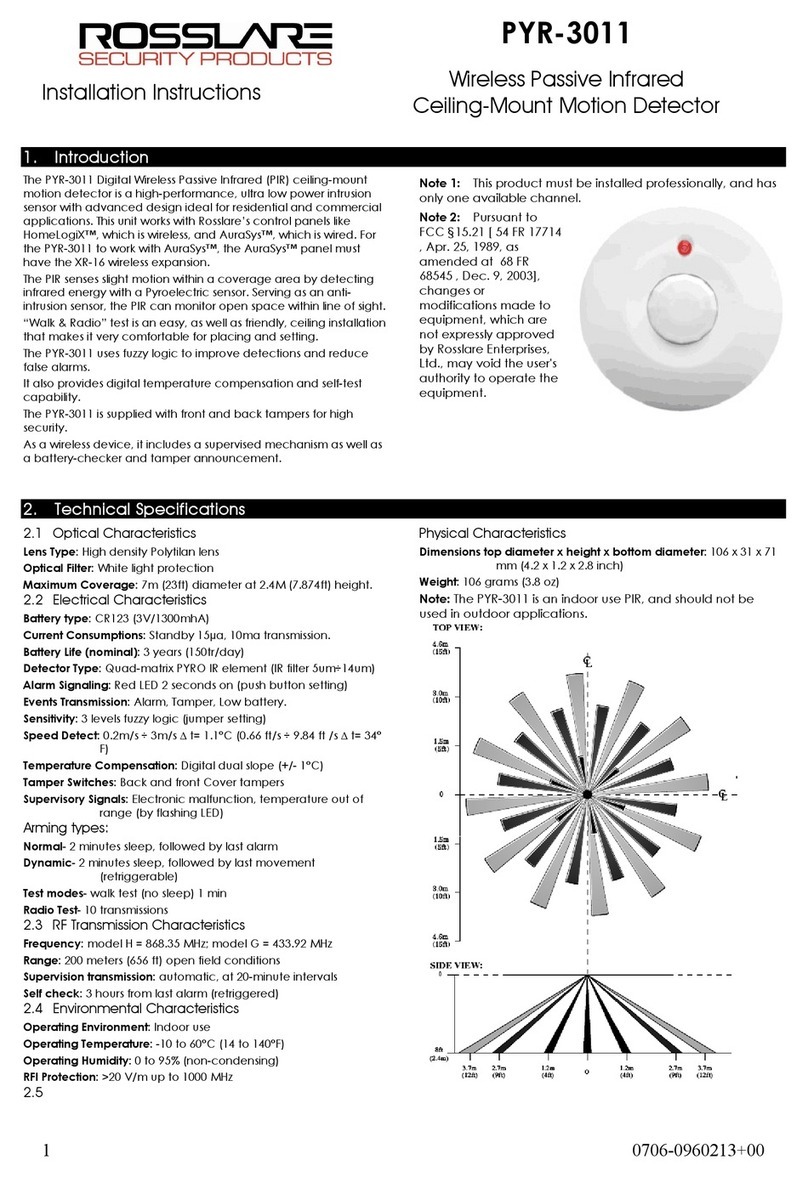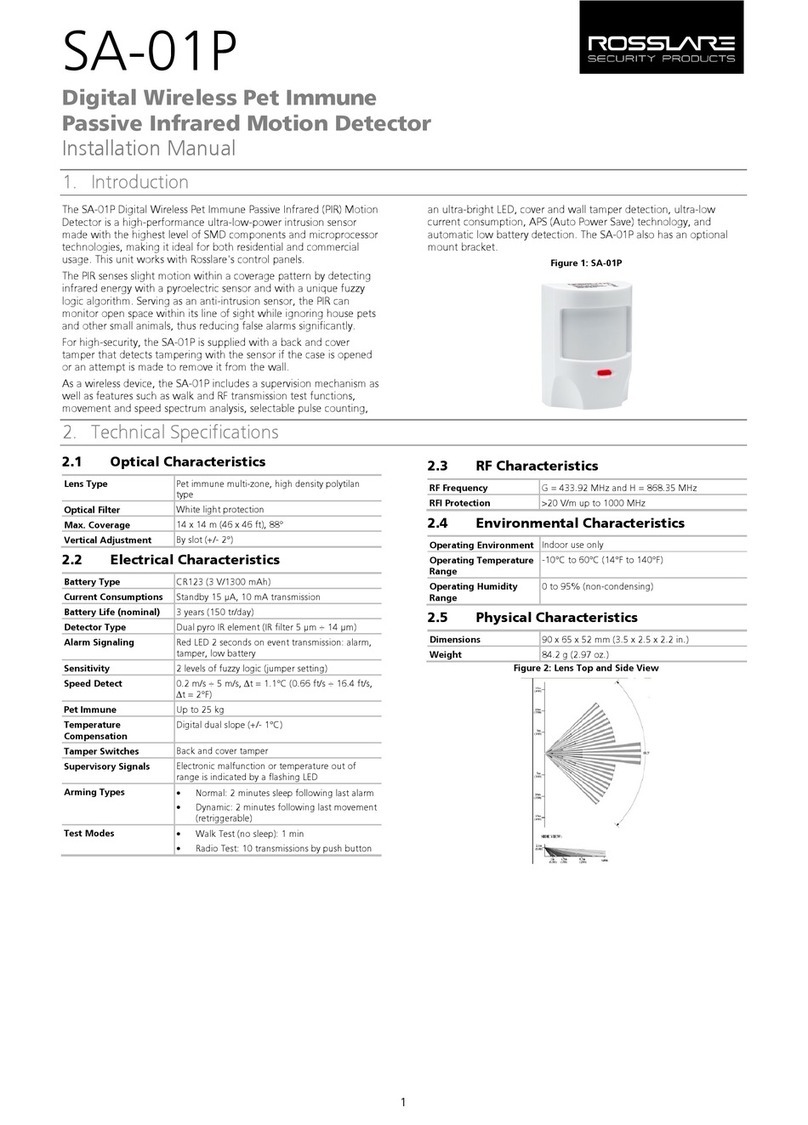
4
Limited Warranty
ROSSLARE ENTERPRISES LIMITED (ROSSLARE) TWO-YEAR LIMITED
WARRANTY is applicable worldwide. This warranty supersedes any
other warranty. ROSSLARE'S TWO-YEAR LIMITED WARRANTY is
subject to the following conditions:
WARRANTY
Warranty of ROSSLARE'S products extends to the original purchaser
(Customer) of the ROSSLARE product and is not transferable.
PRODUCTS COVERED BY THIS WARRANTY AND DURATION
ROSSLARE ENTERPRISES LTD. AND/OR SUBSIDIARIES (ROSSLARE)
warrants that the PYR-3011 Ceiling-Mount Digital Wired Passive
Infrared Motion Detector to be free from defects in materials and
assembly in the course of normal use and service. The warranty period
commences with the date of shipment to the original purchaser and
extends for a period of 2 years (24 months).
WARRANTY REMEDY COVERAGE
In the event of a breach of warranty, ROSSLARE will credit Customer
with the price of the Product paid by Customer, provided that the
warranty claim is delivered to ROSSLARE by the Customer during the
warranty period in accordance with the terms of this warranty. Unless
otherwise requested by a ROSSLARE representative, return of the failed
product(s) is not immediately required.
If ROSSLARE has not contacted the Customer within a sixty (60) day
holding period following the delivery of the warranty claim, Customer
will not be required to return the failed product(s). All returned
Product(s), as may be requested at ROSSLARE’S sole discretion, shall
become the property of ROSSLARE.
To exercise the warranty, the user must contact ROSSLARE Enterprises
Ltd. to obtain an RMA number after which, the product must be
returned to the Manufacturer freight prepaid and insured.
In the event ROSSLARE chooses to perform a product evaluation within
the sixty (60) day holding period and no defect is found, a minimum
US$ 50.00 or equivalent charge will be applied to each Product for
labor required in the evaluation.
ROSSLARE will repair or replace, at its discretion, any product that
under normal conditions of use and service proves to be defective in
material or workmanship. No charge will be applied for labor or parts
with respect to defects covered by this warranty, provided that the
work is done by ROSSLARE or a ROSSLARE authorized service center.
EXCLUSIONS AND LIMITATIONS
ROSSLARE shall not be responsible or liable for any damage or loss
resulting from the operation or performance of any Product or any
systems in which a Product is incorporated. This warranty shall not
extend to any ancillary equipment not furnished by ROSSLARE, which is
attached to or used in conjunction with a Product, nor to any Product
that is used with any ancillary equipment, which is not furnished by
ROSSLARE.
This warranty does not cover expenses incurred in the transportation,
freight cost to the repair center, removal or reinstallation of the
product, whether or not proven defective.
Specifically excluded from this warranty are any failures resulting from
Customer's improper testing, operation, installation, or damage
resulting from use of the Product in other than its normal and
customary manner, or any maintenance, modification, alteration, or
adjustment or any type of abuse, neglect, accident, misuse, improper
operation, normal wear, defects or damage due to lightning or other
electrical discharge. This warranty does not cover repair or replacement
where normal use has exhausted the life of a part or instrument, or any
modification or abuse of, or tampering with, the Product if Product
disassembled or repaired in such a manner as to adversely affect
performance or prevent adequate inspection and testing to verify any
warranty claim.
ROSSLARE does not warrant the installation, maintenance, or service of
the Product. Service life of the product is dependent upon the care it
receives and the conditions under which it has to operate.
In no event shall ROSSLARE be liable for incidental or consequential
damages.
LIMITED WARRANTY TERMS
THIS WARRANTY SETS FORTH THE FULL EXTENT OF ROSSLARE’S WARRANTY.
THE TERMS OF THIS WARRANTY MAY NOT BE VARIED BY ANY PERSON,WHETHER OR
NOT PURPORTING TO REPRESENT OR ACT ON BEHALF OF ROSSLARE.
THIS LIMITED WARRANTY IS PROVIDED IN LIEU OF ALL OTHER WARRANTIES.ALL
OTHER WARRANTIES EXPRESSED OR IMPLIED,INCLUDING WITHOUT LIMITATION,
IMPLIED WARRANTIES OF MERCHANTABILITY AND FITNESS FOR A PARTICULAR
PURPOSE,ARE SPECIFICALLY EXCLUDED.
IN NO EVENT SHALL ROSSLARE BE LIABLE FOR DAMAGES IN EXCESS OF THE
PURCHASE PRICE OF THE PRODUCT,OR FOR ANY OTHER INCIDENTAL,
CONSEQUENTIAL OR SPECIAL DAMAGES,INCLUDING BUT NOT LIMITED TO LOSS OF
USE,LOSS OF TIME,COMMERCIAL LOSS,INCONVENIENCE,AND LOSS OF PROFITS,
ARISING OUT OF THE INSTALLATION,USE,OR INABILITY TO USE SUCH PRODUCT,TO
THE FULLEST EXTENT THAT ANY SUCH LOSS OR DAMAGE MAY BE DISCLAIMED BY
LAW.
THIS WARRANTY SHALL BECOME NULL AND VOID IN THE EVENT OF A VIOLATION OF
THE PROVISIONS OF THIS LIMITED WARRANTY.
Contact Information
Asia Pacific, Middle East, Africa
Rosslare Enterprises Ltd.
Kowloon Bay, Hong Kong
Tel: +852 2795-5630
Fax: +852 2795-1508
support.apac@rosslaresecurity.com
United States and Canada
Rosslare Security Products, Inc.
Southlake, TX, USA 76092
Toll Free: +1-866-632-1101
Local: +1-817-305-0006
Fax: +1-817-305-0069
support.na@rosslaresecurity.com
Latin America
Rosslare Latin America
Buenos Aires, Argentina 1642
support.la@rosslaresecurity.com
Europe
Rosslare Israel Ltd.
Rosh HaAyin, Israel 48091
Tel: +972 3 938-6838
Fax: +972 3 938-6830
support.eu@rosslaresecurity.com
China
Rosslare Electronics (Shenzhen) Ltd.
Shenzhen, China
Tel: +86 755 8610 6842
Fax: +86 755 8610 6101
support.cn@rosslaresecurity.com
India
Rosslare Electronics India Pvt Ltd.
Tel/Fax: +91 20 40147830
Mobile: +91 9975768824
sales.in@rosslaresecurity.com
www.rosslaresecurity.com
0706-0960213+01

